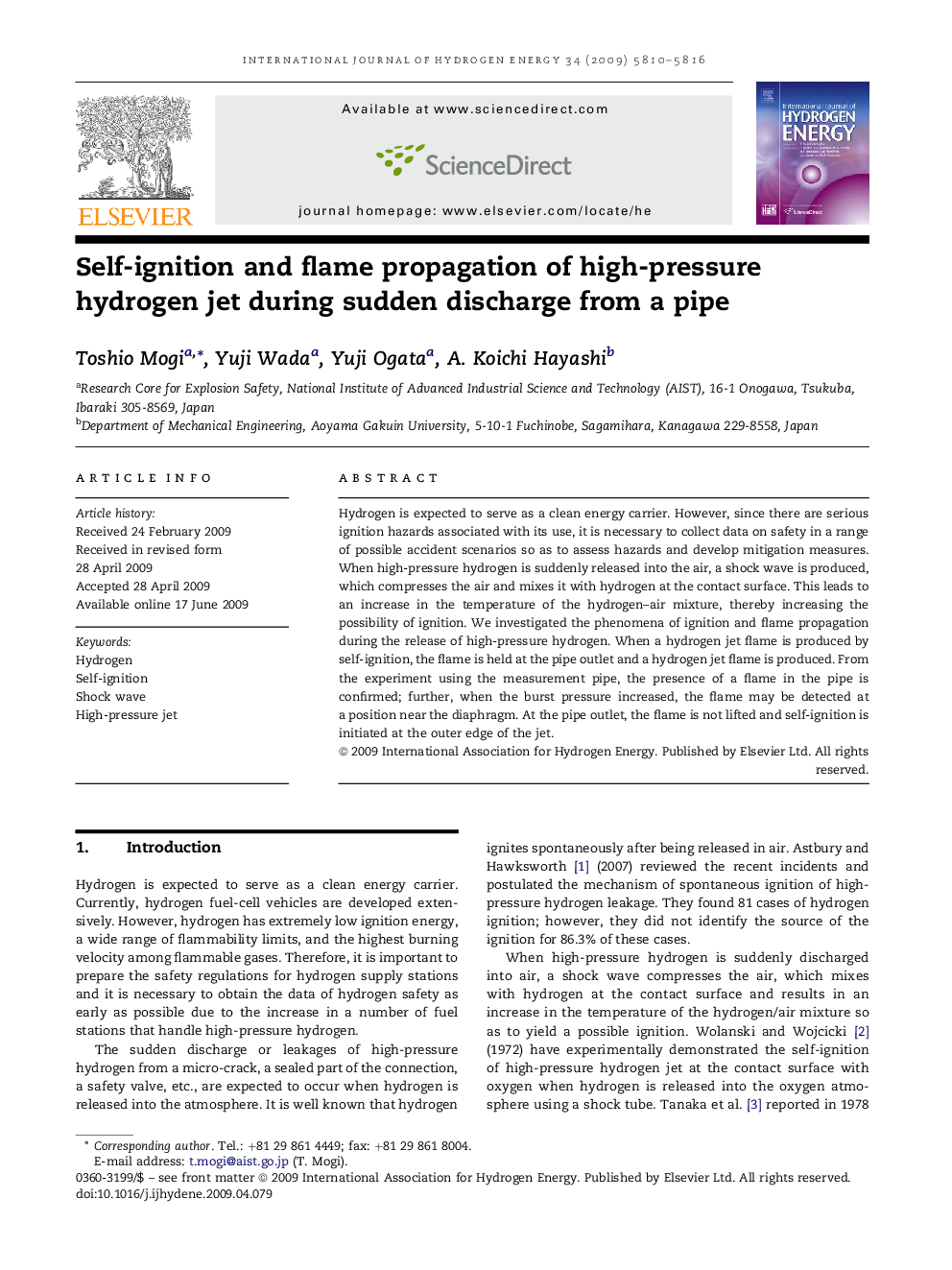| Article ID | Journal | Published Year | Pages | File Type |
|---|---|---|---|---|
| 1273710 | International Journal of Hydrogen Energy | 2009 | 7 Pages |
Hydrogen is expected to serve as a clean energy carrier. However, since there are serious ignition hazards associated with its use, it is necessary to collect data on safety in a range of possible accident scenarios so as to assess hazards and develop mitigation measures. When high-pressure hydrogen is suddenly released into the air, a shock wave is produced, which compresses the air and mixes it with hydrogen at the contact surface. This leads to an increase in the temperature of the hydrogen–air mixture, thereby increasing the possibility of ignition. We investigated the phenomena of ignition and flame propagation during the release of high-pressure hydrogen. When a hydrogen jet flame is produced by self-ignition, the flame is held at the pipe outlet and a hydrogen jet flame is produced. From the experiment using the measurement pipe, the presence of a flame in the pipe is confirmed; further, when the burst pressure increased, the flame may be detected at a position near the diaphragm. At the pipe outlet, the flame is not lifted and self-ignition is initiated at the outer edge of the jet.
